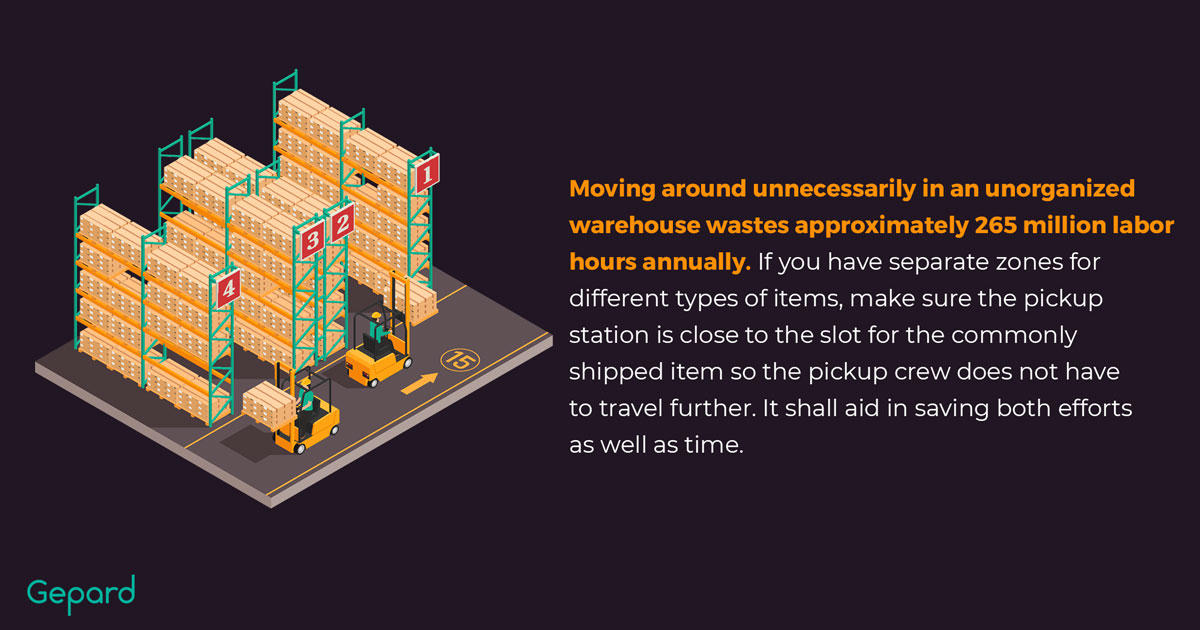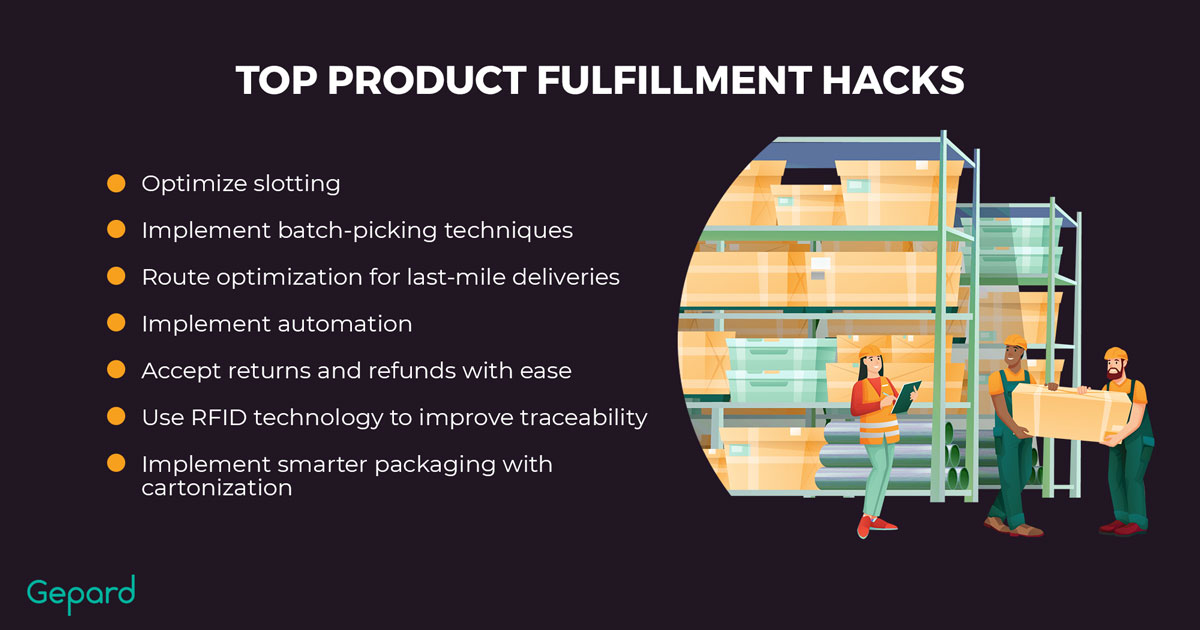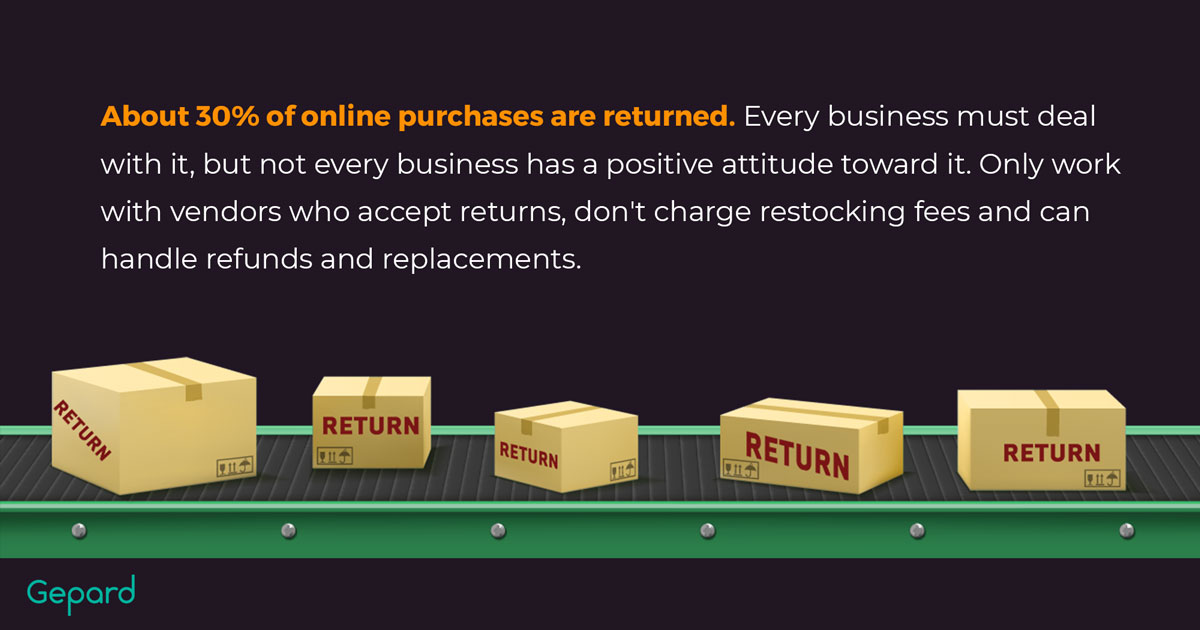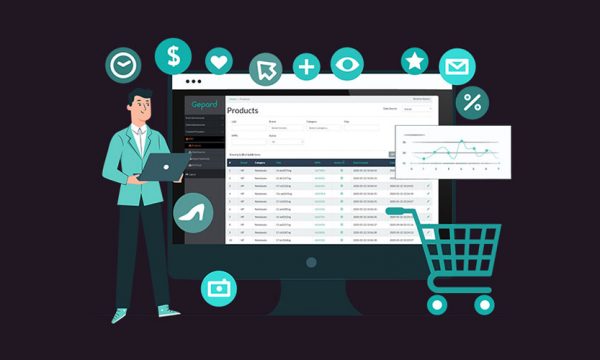7 Product Fulfillment Hacks That eCommerce Owners Should Apply
By the end of 2024, the eCommerce industry is estimated to generate $5 trillion in revenue worldwide. If you’re an online retailer, you’ll need to plan for increased demand in the coming year and work out how to meet it through eCommerce fulfillment.
A robust eCommerce fulfillment plan will allow you to ship and deliver products to your customers quickly and efficiently. As a result, customers would love to buy from you again and your brand reputation will also improve.
In this post, we’ll look at how eCommerce fulfillment works, what top techniques or models you should consider, and how you can improve this process to help you meet consumer expectations and grow your business. But let’s begin by getting our facts straight about what eCommerce product fulfillment is exactly.
What Is eCommerce Product Fulfillment?
Your products will be routed to a fulfillment center rather than being transported directly from the supplier to the client (which is called dropshipping). Fulfillment centers are warehouses where your products are stored before being shipped to clients. To be clear, you own these items, but your chosen 3PL supplier is in charge of their management and storage.
Your products are stored in the fulfillment warehouse until orders are placed from your customers and received from your sales channels through third-party fulfillment. The venues on which you sell your products, such as Amazon, eBay, your own website, social media, and so on, are known as sales channels.
This activity is, without a doubt, an important part of your eCommerce firm. Outsourcing your fulfillment ensures that your customers have the finest delivery experience.
Product Fulfillment Hacks You Should Apply
Here are the 7 eCommerce product fulfillment tactics you should apply in 2022.
1. Optimize Slotting
Simply said, slotting is the process of arranging your inventory in the warehouse in such a way that you may increase efficiency while lowering handling costs and maximizing warehouse optimization. It’s not just about putting things in the right places in the warehouse; it’s also about making the warehouse more organized and manageable.
For this, you may keep the priority of the goods you place in the slots in mind when you choose inventory slot locations. Items that are frequently picked should be kept in a location that is easy to reach and locate so that workers may quickly identify the item and complete their orders.
Moving around unnecessarily in an unorganized warehouse wastes approximately 265 million labor hours annually. If you have separate zones for different types of items, make sure the pickup station is close to the slot for the commonly shipped item so the pickup crew does not have to travel further. It shall aid in saving both efforts as well as time.

You can use a variety of factors to prioritize the slots, depending on what you think is best for your warehouse. You can do it in alphabetical order or choose a different location in the warehouse’s core for frequently-shipped items. Whatever priority criterion you use, the end result should be to improve the process efficiency and speed. The goods should always be easily accessible and within reach of the workers.
2. Implement Batch-Picking Techniques
The process of gathering many packaged orders that will be delivered at the same time is known as fulfillment batching. This eliminates the need to put individual items onto vehicles every time.
The benefits of fulfillment batching include:
- Facilitates the shipping process: Instead of walking back and forth between the packing station and the shipping port, packers can place boxed products at the end of the packing station. Making sure you and your staff have learned how to measure a box for shipping beforehand can be an advantage in these cases.
- Streamlines freight service processes: Your transportation or 3PL partner can immediately identify which order batches need to be loaded up, rather than worrying if they’ve gotten all of the shipments for the day.
- Saves time: When orders are efficiently packed, more space is available for other operations. It’s easier to schedule cleaning, refilling, and maintenance during the workday rather than waiting until something goes missing or breaks.
Staff may be more focused, conscientious, and productive throughout the day because of batching. They don’t have to wonder where they’ll go next or if their work will get done because they work in short bursts.
3. Route Optimization For Last-Mile Deliveries
The final stage in getting your product from your location (or a transportation hub) to the end user’s location is called last-mile delivery. The difficulty with last-mile delivery is simply that it is frequently the most expensive portion of the operation, accounting for more than half of total shipping expenses.
The process of identifying the quickest and most cost-effective route to handle a list of deliveries is known as route optimization. Finding the optimum route is a difficult task because your drivers’ routes usually involve a lot more than two places.
A route optimization software may allow your company to take into account all of the variables while planning and scheduling delivery to customers. This helps you deliver products faster while keeping the costs at bay.

4. Implement Automation
The fact that more than 80% of warehouses have not incorporated some form of automation is simply appalling. Inefficiencies are bound to develop when your order fulfillment process varies greatly from one day, week, month, or season to the next. You’ll have higher labor and operational expenditures, as well as sometimes overstock or understock your goods if you don’t know what to expect each day in your order fulfillment operations.
To improve predictability, invest in good order management software that can help you monitor, predict, and automate your systems. In warehousing and logistics, automation has become a huge deal, and it’s just going to get bigger. It benefits an eCommerce owner by decreasing the paperwork because the data can be handled even more efficiently by the automation software.
In addition to that, the management system can also help you verify the shipping addresses and payments. Automation will save you time and provide greater accuracy. It’s easier to divert your attention and improve efforts elsewhere when your program performs the monitoring for you.
An excellent example of such a solution is product information management software like Gepard PIM which serves as a single source of truth for your business and offers an extensive set of features for content management, enrichment, verification, data syndication, and also offers digital shelf analytics for your eCommerce business.
Read more about the benefits of PIM solution:
5. Accept Returns And Refunds With Ease
Relax, returns in an eCommerce store are inevitable. Refunds are due. In fact, about 30% of online purchases are returned. Every business must deal with it, but not every business has a positive attitude toward it. Make an exception. Keep your cool. Most importantly, be efficient at all times. Only work with vendors who accept returns, don’t charge restocking fees, and can handle refunds and replacements. Yes, be explicit about your return policy, but also build streamlined processes for handling returns, reverse logistics, and refunds.

6. Use RFID To Improve Traceability
Transparency and data tracking at every level of the supply chain are critical for developing robust analytics, which is required for making significant changes on a daily basis. You may increase transparency and tracking throughout the order fulfillment process by using radio-frequency identification (RFID) technology and sophisticated tracking software.
The most well-known and commonly used RFID application in retail is inventory tracking. Accurate product-location data can reduce the cost and complexity of inventory management, as well as accelerate picking, packing, and delivery, and improve customer satisfaction. As a result, many shops should start with tracking, which has the added benefit of unit-level tagging, which lays the groundwork for later applications.
7. Smarter Packaging With Cartonization
The actual shipping of orders to customers is another (if not the most) crucial aspect of fulfilling orders. For example, in 2018, Amazon’s delivery expenditures totaled $27.7 billion, on top of the $34 billion set aside especially for “fulfillment.” That’s a huge sum of money, and it demonstrates how dramatically transportation expenses may rise over time.
A hack that may be of use here is trying to develop strategies that accommodate smarter packaging that reduces the costs significantly. Cartonization is one such process where you select the appropriate type and size of shipping container for each shipment. Cartonization can be used to help decide the ideal packing strategy based on labor and packaging costs, as well as product characteristics including density, fragility, and temperature. Of course, the particular cartonization technique that works best for your business will be determined by the features of the product being packaged and sent.
While cartonization has become something of a “new normal” in order fulfillment, the fact remains that some businesses have yet to fully embrace the concept. For those businesses, even something as easy as looking for cartonization software to automate the process can result in significant shipping cost reductions.
In A Nutshell
You can use these hacks and modify your eCommerce product fulfillment process accordingly. Ultimately these will result in an operation that definitely ups your client’s satisfaction. If your fulfillment process and shipping practices are pristine your client will keep coming back to your store for more retail therapy. That’s a great bargain in exchange for a well-oiled product fulfillment operation at the backend!






